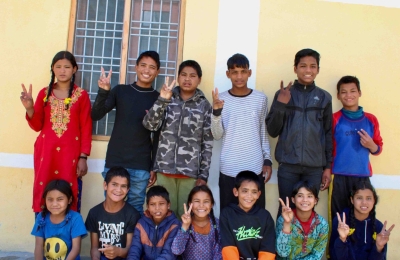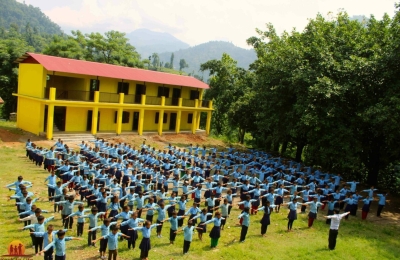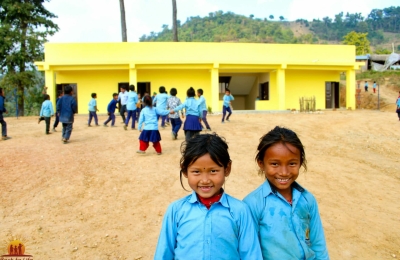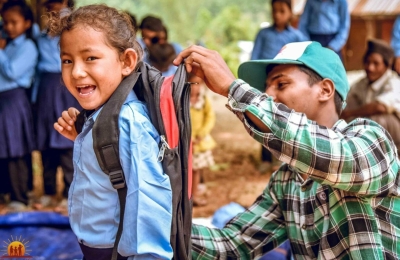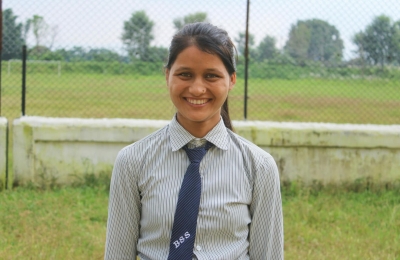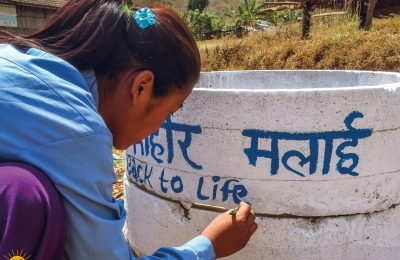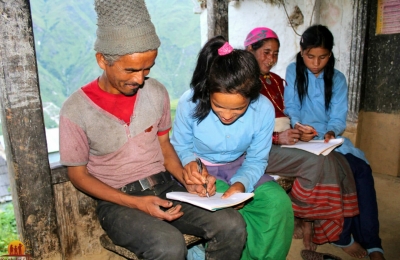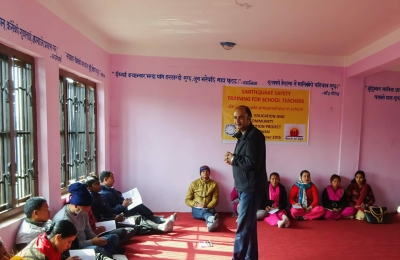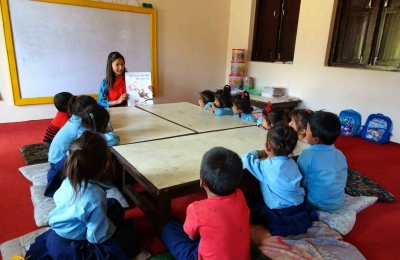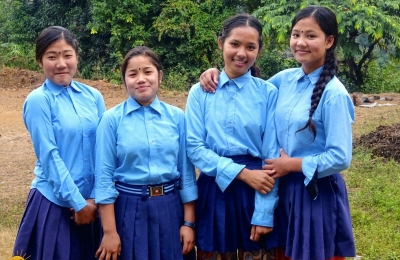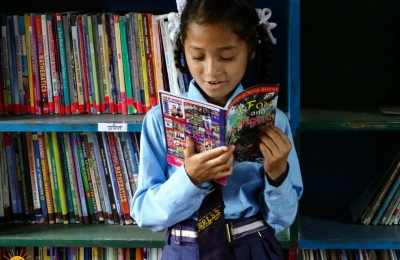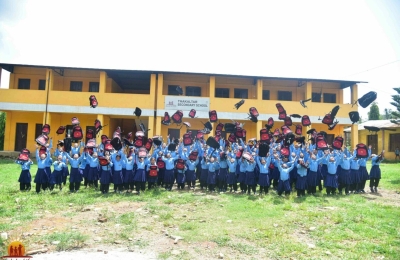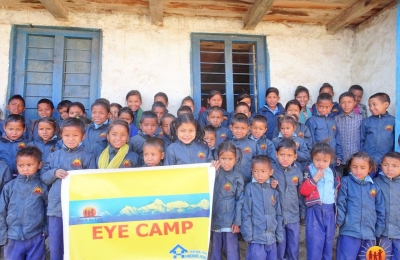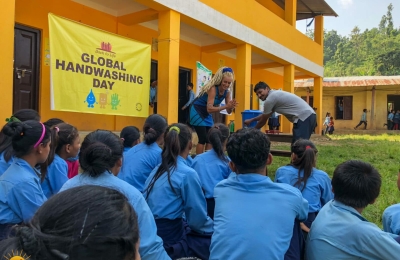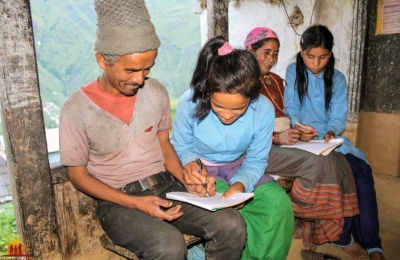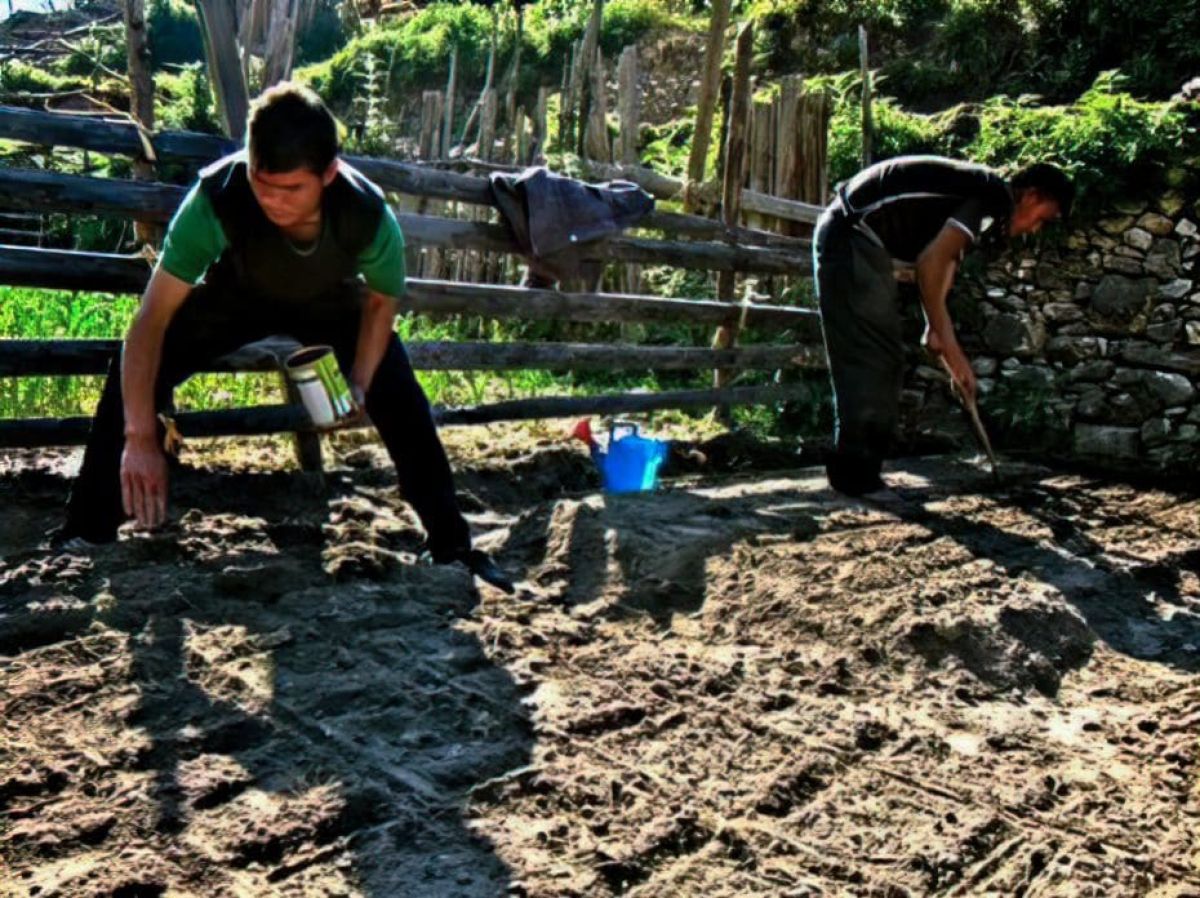

Educated – Agricultural Experts for Mugu
Our measures for agricultural development in Mugu, with which we want to give the residents the opportunity to sustainably improve their income situation. One of the long-term measures is to give young Mugu men an agricultural education. After completing their training, these young agricultural experts return to their villages and share their knowledge with the locals in order to achieve the greatest possible multiplier effects.
Rup Bahadur is one of them and has completed the 15-month training as a “junior agricultural technician” at a state agricultural school. Back to Life covered costs and accommodation. Since then, Rup has been working in his home village and the surrounding villages in the Ruwa district and is responsible for around 300 mountain farmers.
Our program director, Dikendra Dhakal, met him on site in 2014 and asked him about his training.
Rup, Back to Life gave you the opportunity to do agricultural training as part of a scholarship. How did you fare and what did you learn?
First of all, I would like to thank Back to Life for giving me the opportunity to do this training. The apprenticeship challenged me. Besides the cultivation were also
the storage up to the marketing of the agricultural products are important issues.
You come from this region and know the traditional one Land farming in the mountains. What do you think are the biggest problems in Mugu??
It’s a sum of problems. The long cold winter and the many dry months are not good conditions. In addition, the villages are often at an altitude of over 3,000 meters. Most families only have small fields, often terraced fields. Because of the traditional cultivation methods, the yield of many families is not even enough to feed themselves all year round, let alone be able to sell something. On the contrary: many families are regularly affected by food shortages and hunger, even though they are farmers and work all day.
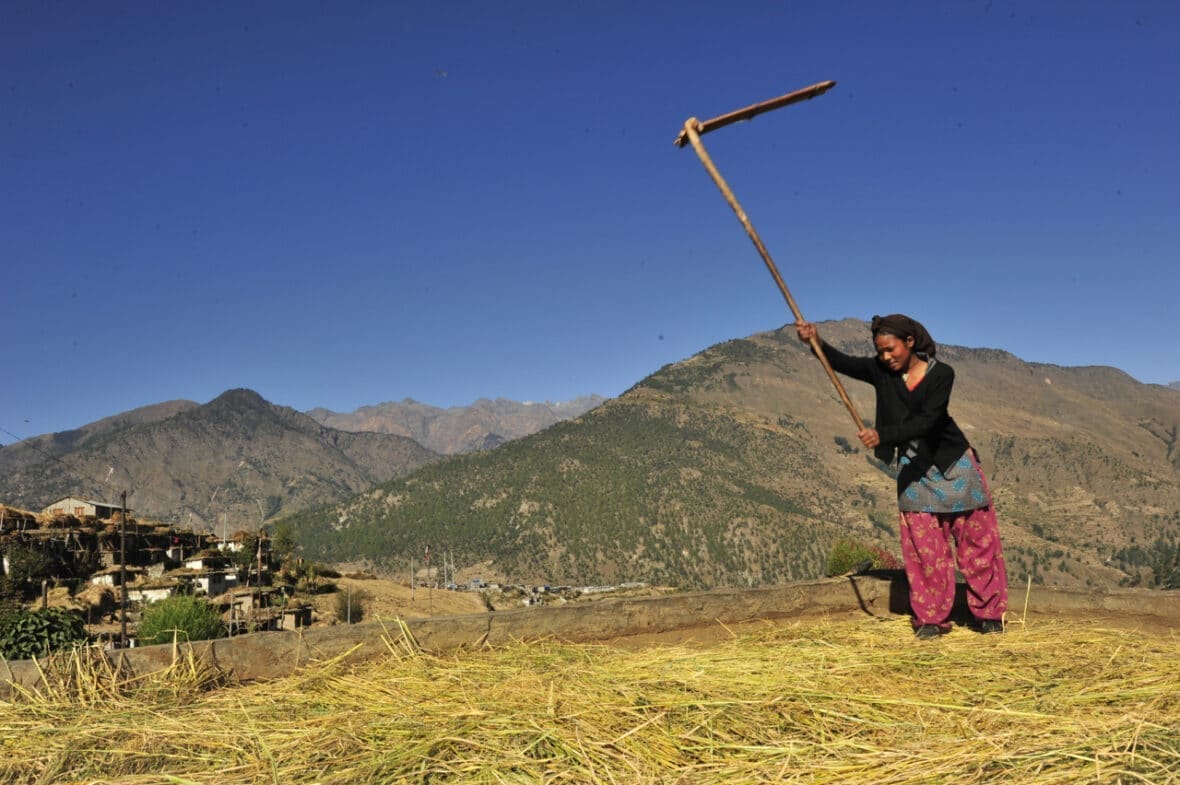

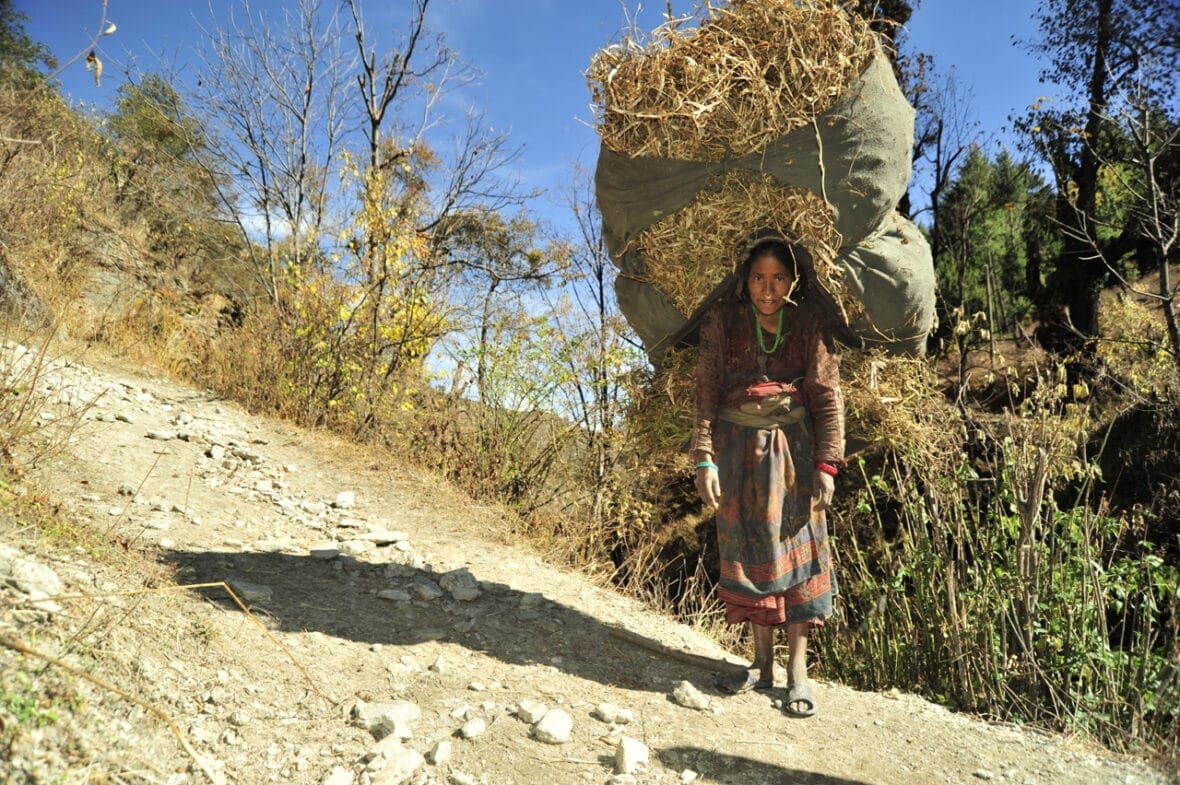

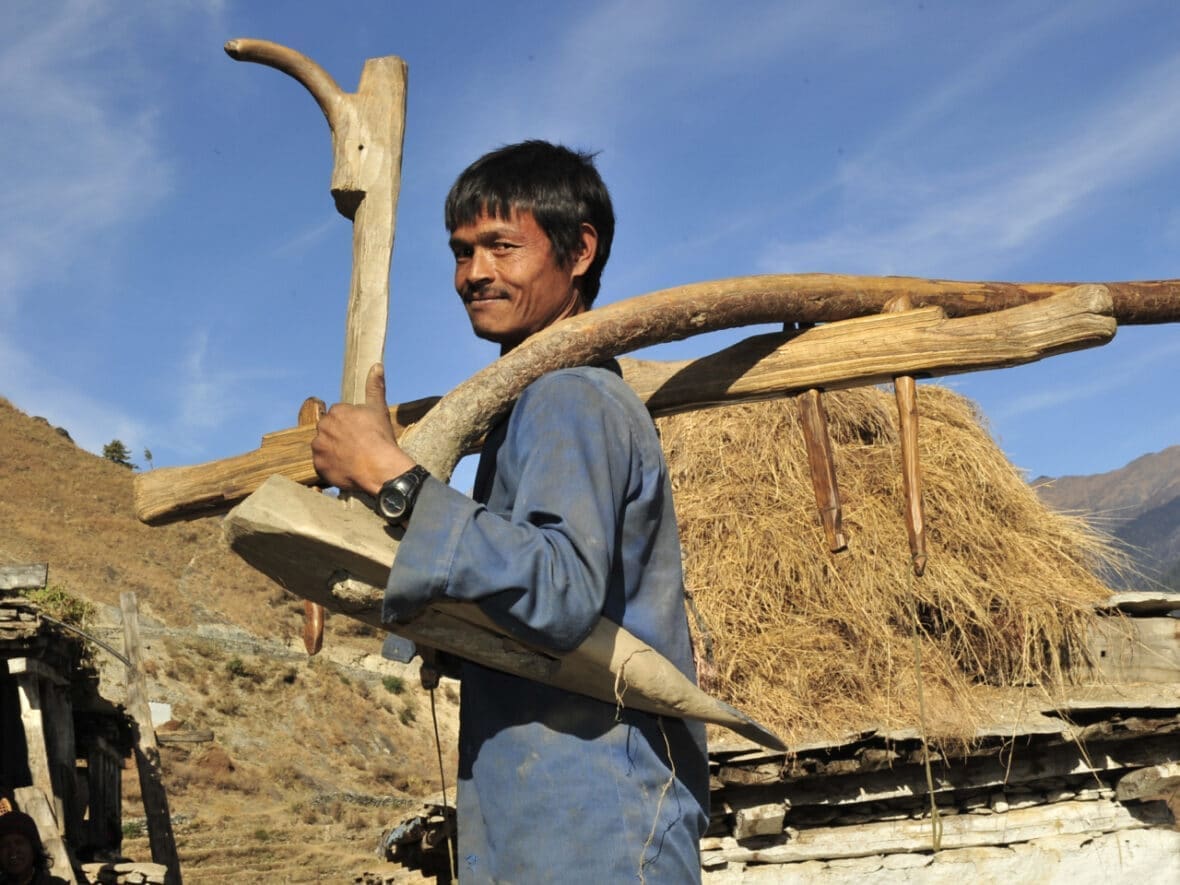

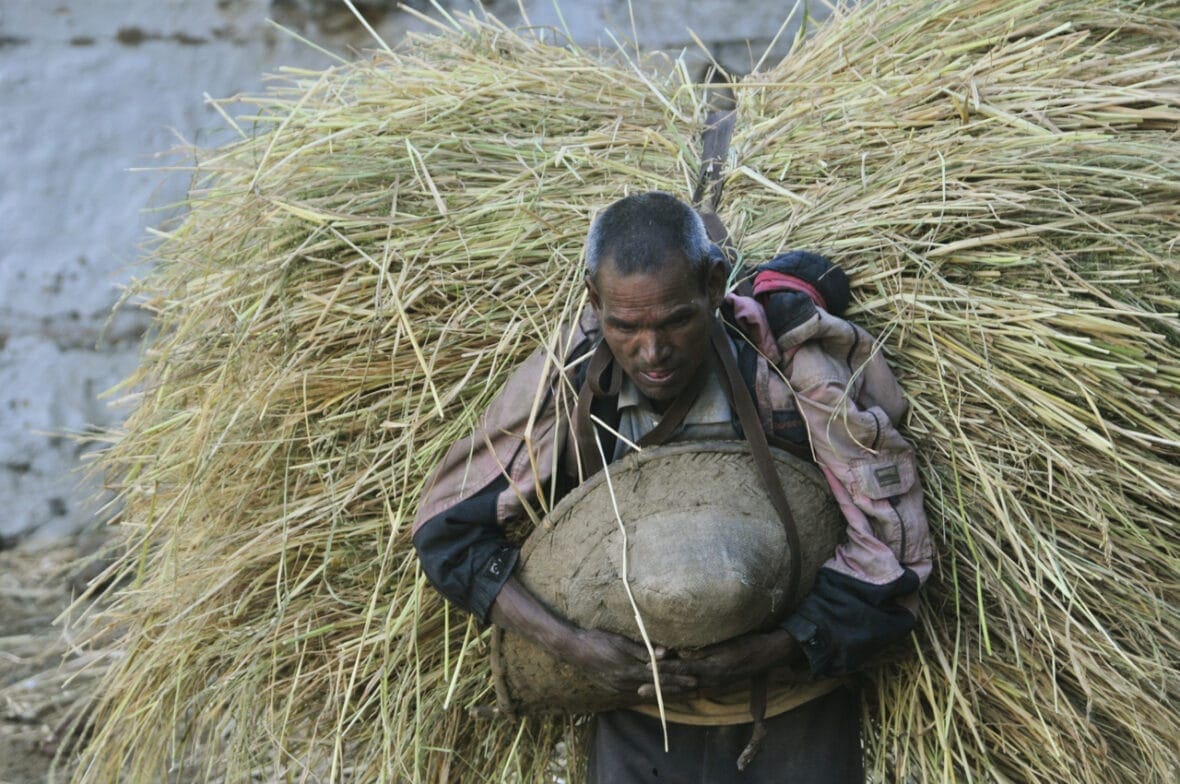

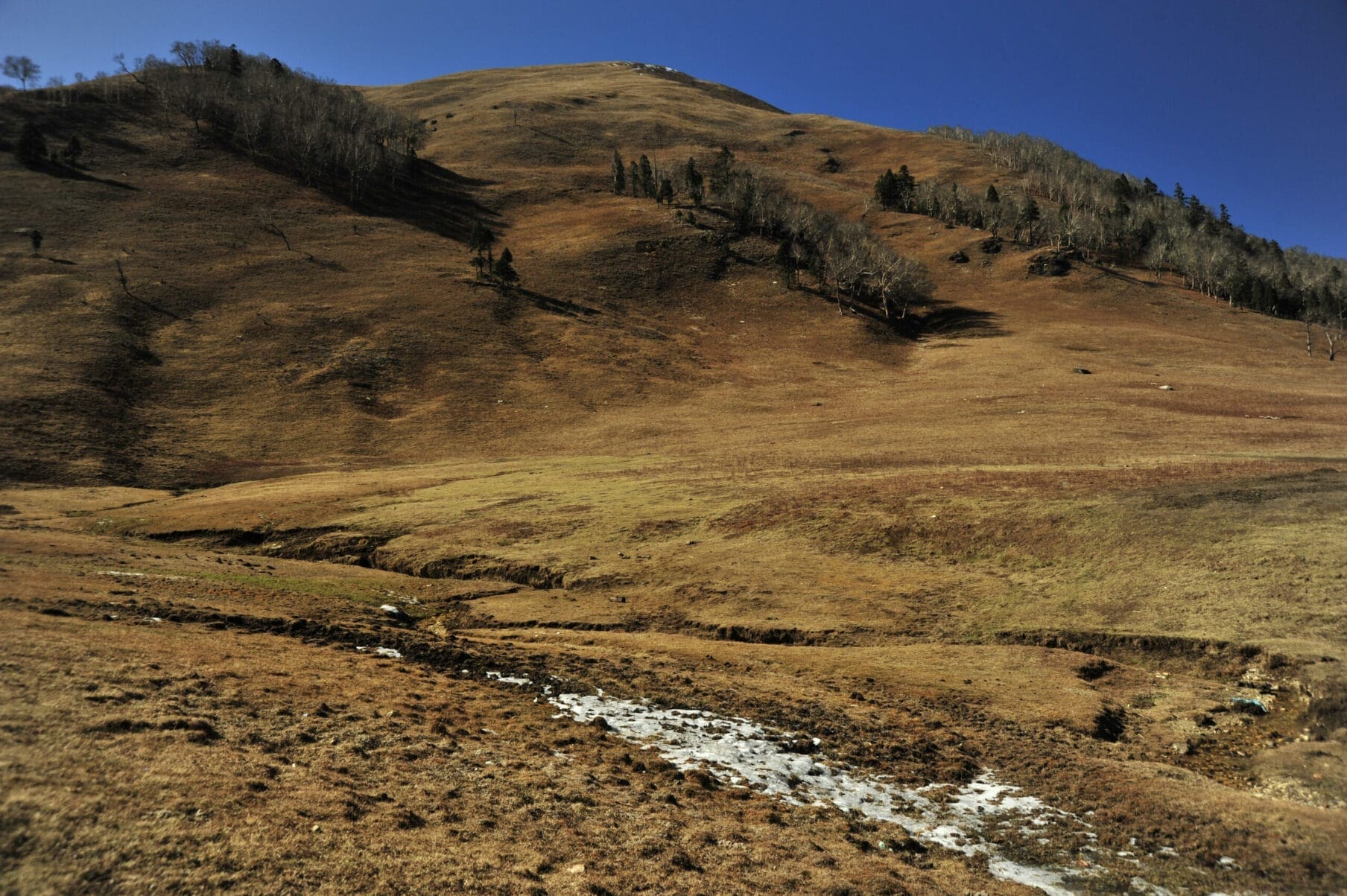

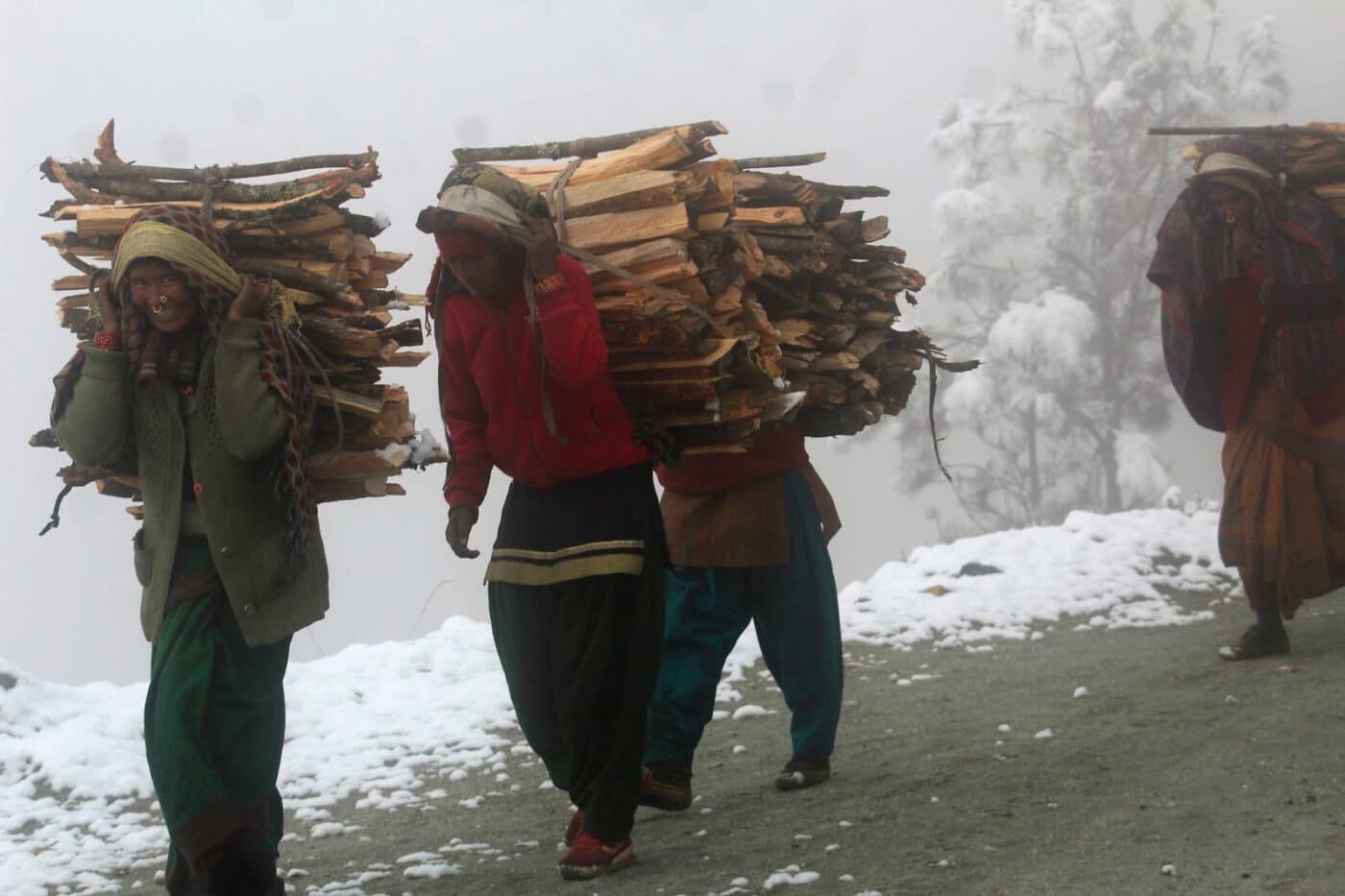

Have you always been aware of these problems or did you only find out about them or learn something about them during your training?
Basically, I was aware of the problems. However, during my training I got to know methods and techniques for the first time with which yields and cultivation diversity can be increased despite adverse weather and soil conditions.
How do you implement that in Mugu?
The families in Mugu have so far not grown any vegetables. They had no access to the appropriate seeds, nor did they know how to cultivate it. Many types of vegetables were simply unknown to the residents. Only when Back to Life introduced new varieties as part of the project, such as spinach or pumpkin, did the locals get to know them.
It is important that the mountain farmers internalize the new varieties, cultivation methods and techniques so that they can live from their hard work in the medium term. So it is part of my job to explain and practically demonstrate new and effective cultivation methods and techniques to you, so that this knowledge is consolidated.
But how does it look in practice? Can you give us an example of what you are working on with the residents?
First of all, I choose the farmers who are open to new crops and cultivation methods and who want to learn new things. With them I build model fields and small greenhouses. Here we grew different types of vegetables together, for which it would be too cold without the protection of the greenhouse. The first successes are quickly visible and convince even the more skeptical farmers and ultimately encourage them to participate. I will continue to be at your side in an advisory capacity in the future.
Another example is the correct use of the fertilizer. Some farmers have cattle to fertilize the fields and oxen to plow the fields. However, they use the manure in a completely inefficient way. First, they store the manure in the open air, where it is fully exposed to the weather and solar radiation. Then they put it out in the fields long before they are plowed or dug up. Most of the nutrients in the fertilizer are already weathered before the first seed gets into the soil. So I teach them to store the manure in a compost pit that has been set up beforehand and to protect it from the weather in order to preserve as many nutrients as possible for a long time. I also tell them to apply the fertilizer shortly before the field is plowed and to sow immediately afterwards.
That sounds logical. Are there any other examples?
Many of these farmers have never received any training and only know their traditional methods and techniques. For example, you are completely dependent on rainwater. They must first be taught how to store this or make it usable for a longer period through irrigation systems. This is only possible through illustration. At the same time we talk about the best possible tillage, pest control and the correct timing of sowing and harvesting in order to achieve the highest possible yield under these harsh conditions.














Do you also talk to the farmers about new tools?
Naturally. A normal spade is a big improvement here, as many farmers still have to work with self-carved wooden shovels. In the agricultural center set up by Back to Life in our village, the farmers can borrow new tools to try them out. In addition to spades and other tools, we also have a powerless threshing machine there. Previously, the grain was laboriously separated from the stalk by threshing by hand with a flail for hours. The whole family had to help with this tedious work. With the new mechanical threshing machine, which is driven by a foot rocker, this work can be done up to 10 times faster. Time and energy that can be used differently. Some of the farmers have already teamed up to buy such a machine for themselves in the near future and then share it afterwards.
Thank you Rup for the interview and good luck for the future!
I really enjoy working with the farmers. Apart from Back to Life, nobody has been interested in the remote mountain villages of Mugu so far. By supporting Back to Life, be it by imparting new methods and techniques, with new and high-yielding seeds or the provision of better tools and hand machines, we will hopefully be able to increase the yields in Mugu’s villages in such a way that people will be able to take care of themselves in the future be able to supply and, at best, also sell income on the market. This would be a big and important step towards life.

